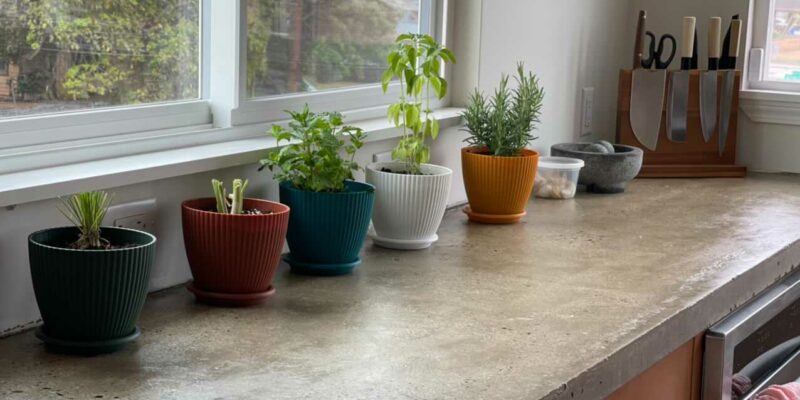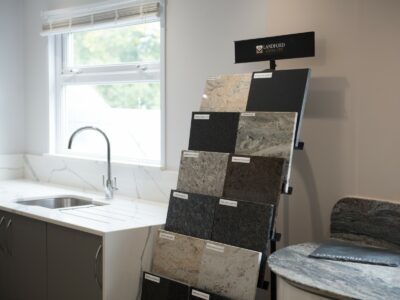Concrete countertops have gained immense popularity in recent years due to their durability and versatility. One of the most significant advantages of concrete countertops is the ability to customize their appearance with various types of stains. In this article, we will discuss how different stains are added to concrete countertops and the types of stains available.
Types of Concrete Stains
There are two primary types of concrete stains: acid-based and water-based. Acid-based stains are composed of hydrochloric acid and metallic salts that react chemically with the concrete surface to create a unique color and pattern. Water-based stains, on the other hand, are made of pigments suspended in a water-based solution that penetrates the concrete surface and creates a uniform color.
Acid-Based Stains
Acid-based stains are highly versatile and offer a wide range of colors and patterns. The reaction between the acid and concrete surface is unpredictable, which means that no two concrete countertops will look alike. The color of the stain depends on various factors such as the age of the concrete, its mineral content, and the amount of acid used.
One of the most significant advantages of acid-based stains is their ability to create a mottled or variegated look. This effect is achieved by applying the stain unevenly, which causes the acid to react differently in various areas. The result is a unique and beautiful concrete countertop that looks like a work of art.
Water-Based Stains
Water-based stains are gaining popularity due to their ease of use and environmental friendliness. Unlike acid-based stains, water-based stains do not require any neutralization or rinsing, making them a safer and cleaner option. They are also available in a wider range of colors and can be used to create a uniform and consistent color.
Water-based stains are perfect for homeowners who want a concrete countertop with a clean and modern look. They are ideal for minimalist kitchens and bathrooms and can be used to create a variety of effects such as marbling and veining. These days, countertop stain supplies are readily available.
Application Techniques
The application of stains to concrete countertops requires skill and experience. The stains must be applied evenly and in a controlled manner to achieve the desired effect. There are several techniques used to apply stains to concrete countertops, including spraying, brushing, and rolling.
Spraying
Spraying is the most common technique used to apply stains to concrete countertops. It involves using an airless sprayer to apply the stain evenly across the surface. This technique is ideal for large areas and creates a uniform and consistent color.
Brushing
Brushing is another technique used to apply stains to concrete countertops. It involves using a brush to apply the stain to the surface of the concrete. This technique is ideal for smaller areas and can be used to create a unique and textured look.
Rolling
Rolling is the least common technique used to apply stains to concrete countertops. It involves using a paint roller to apply the stain to the surface of the concrete. This technique is ideal for larger areas and can be used to create a uniform and consistent color.
Conclusion
In conclusion, stains are an excellent way to customize the appearance of concrete countertops. The type of stain used will depend on the desired effect, the level of skill and experience of the applicator, and the environment in which the countertop will be installed. Acid-based stains are ideal for homeowners who want a unique and variegated look, while water-based stains are perfect for those who want a uniform and consistent color.










Comments